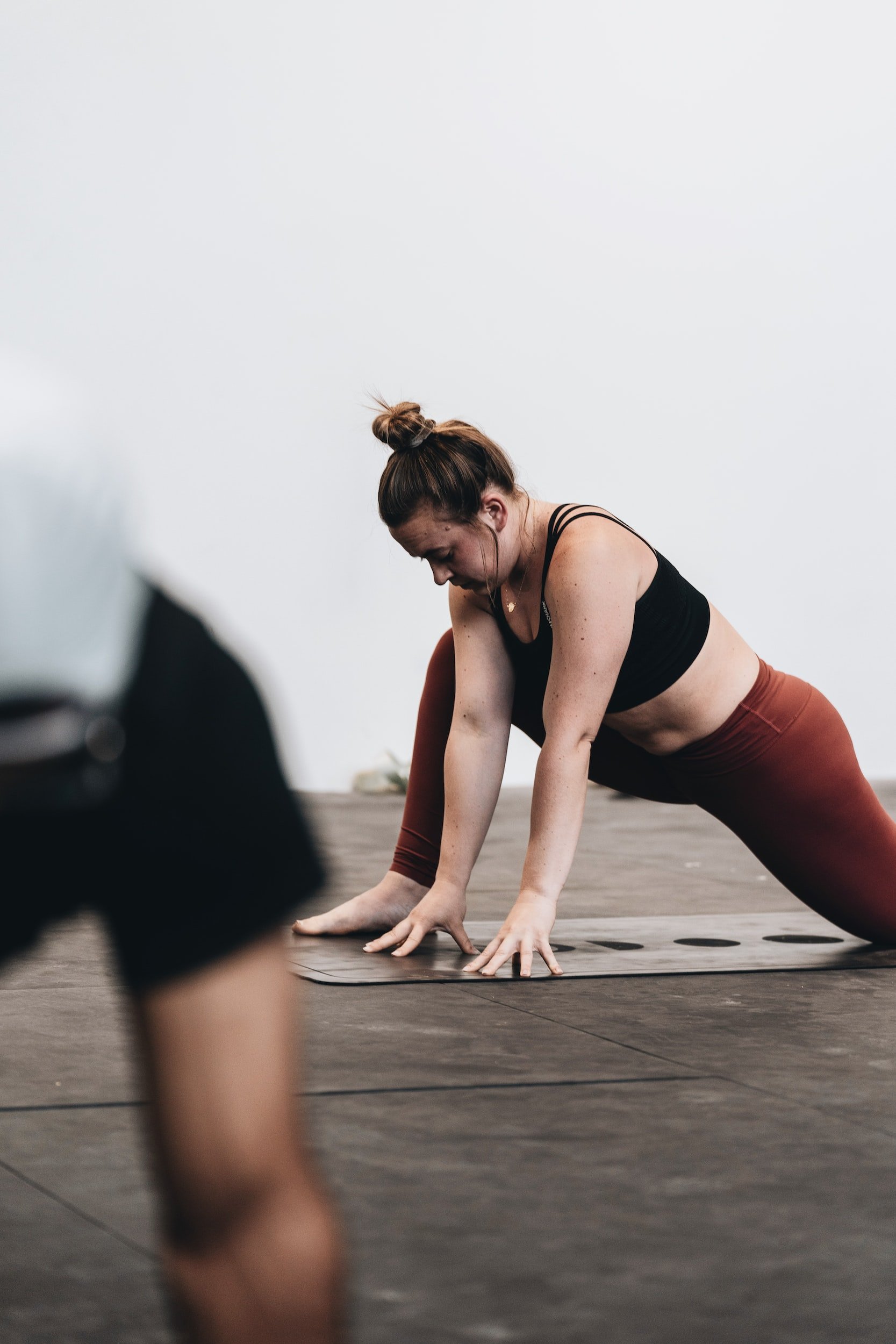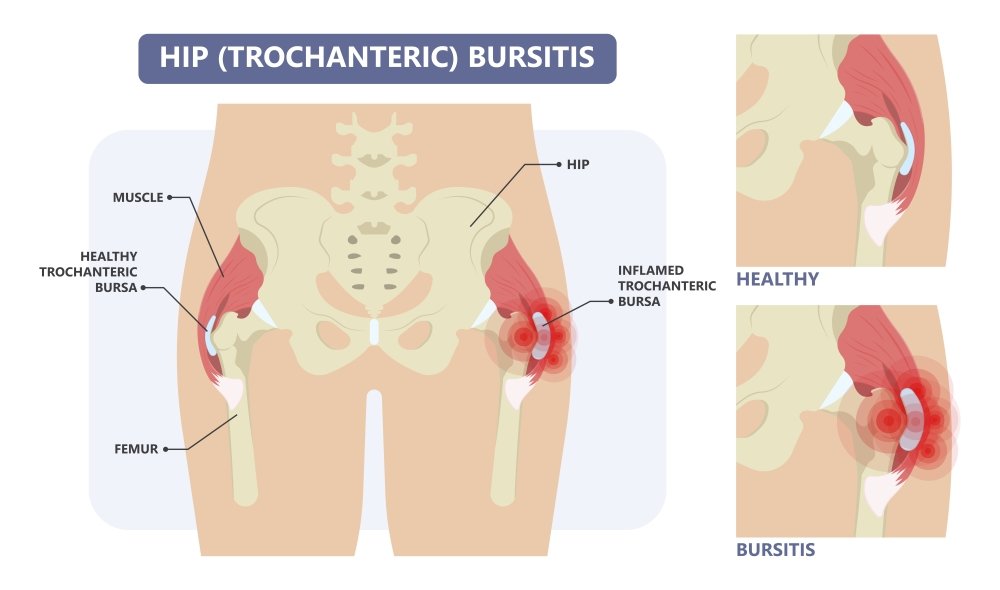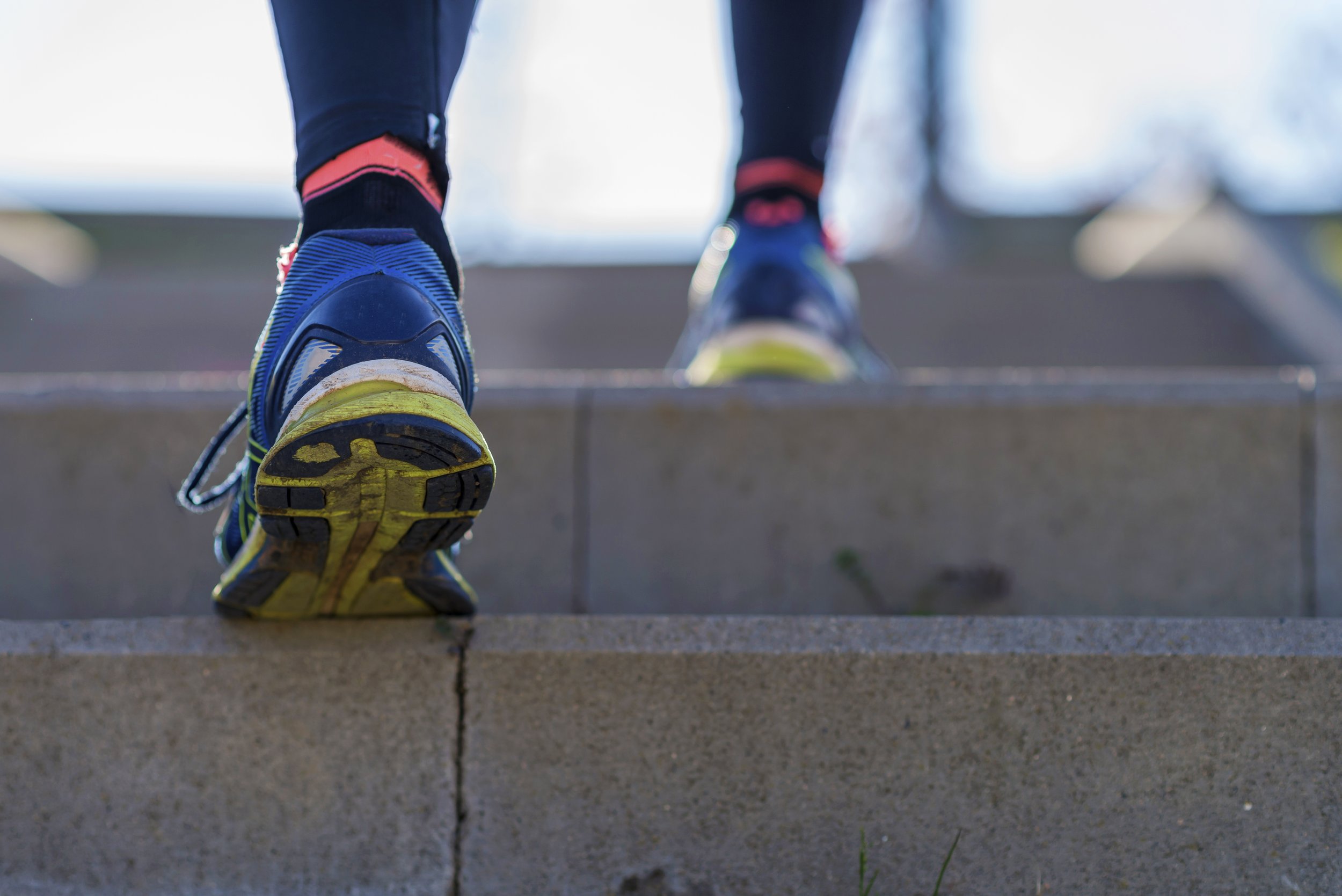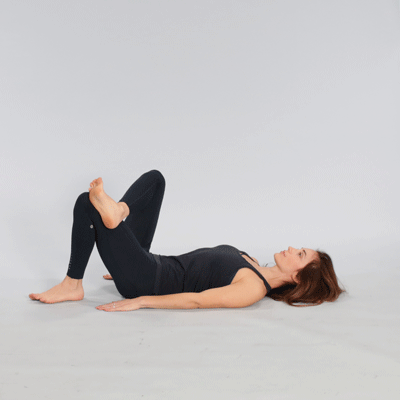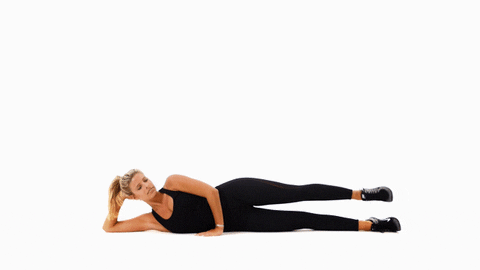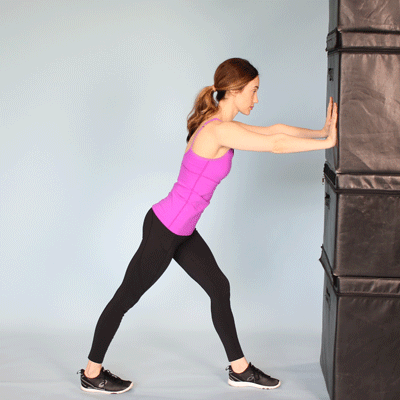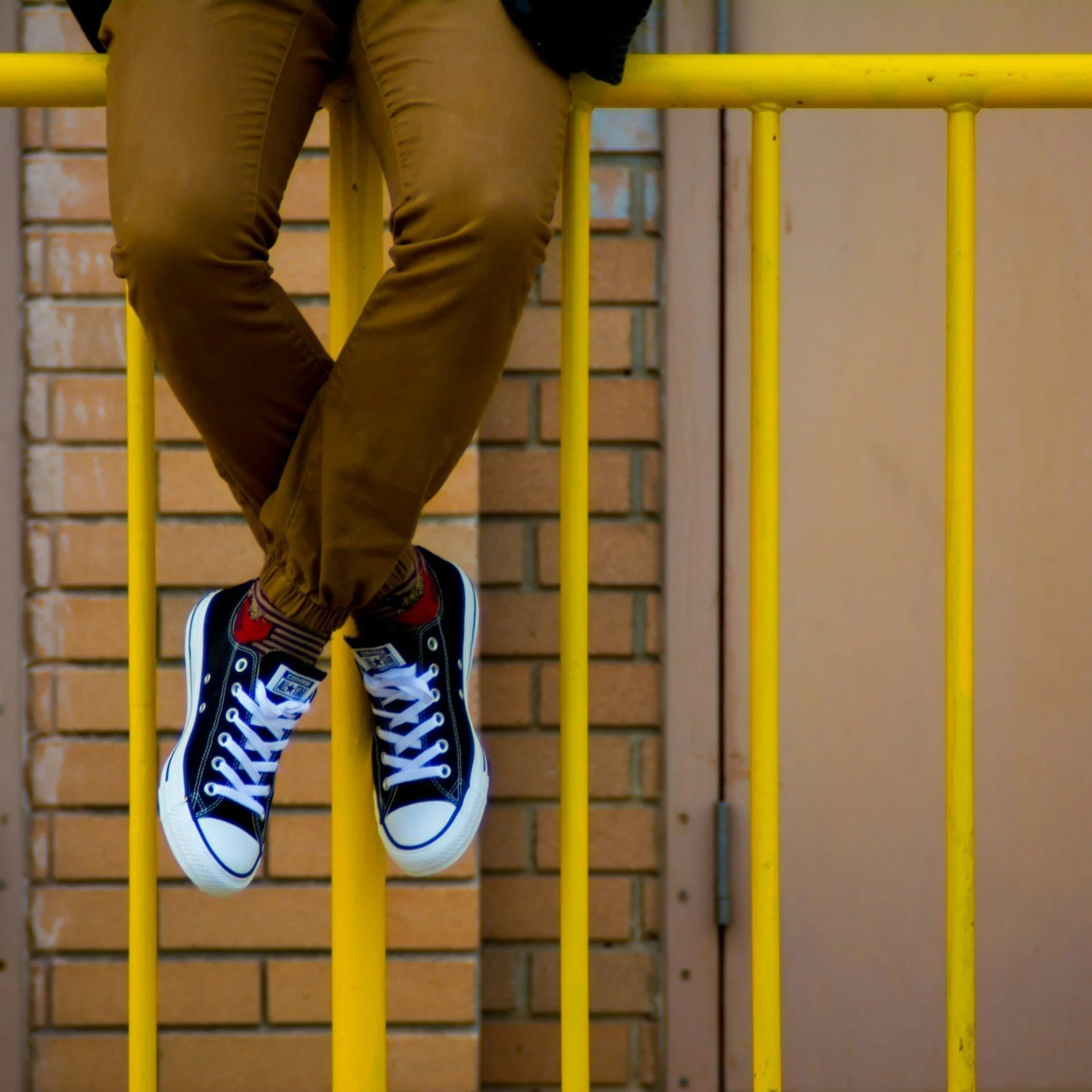Greater Trochanteric Pain Syndrome Treatments: 7 Best Exercises to Get Out of Pain
The hip is a seriously complex joint, it carries all of your weight through any standing movement. So if you’ve got some pain hanging out on the outer side of your hip, its probably complex too. One of the most common hip conditions is known as Greater Trochanteric Pain Syndrome, and boy is it a nagging pain that’ll affect nearly everything you do, even trying to sleep! In this article, we’ll go over the what causes Greater Trochanteric Pain Syndrome and the best stretches to help you git rid of it.
What is Greater Trochanteric Pain Syndrome (GTPS)
Greater Trochanteric Pain Syndrome (GTPS), also known as Trochanteric Bursitis, is a common condition that causes pain on the outer side of the hip. It is caused by inflammation of the bursae, small fluid-filled sacs that cushion the bones, tendons, and muscles around the hip joint. The bursae help to reduce friction and provide a smooth gliding surface for the muscles and tendons to move over.
Anatomy of the Hip
The hip joint is a ball and socket joint that connects the thigh bone (femur) to the pelvis. The greater trochanter is a bony protuberance on the top of the femur that is located just below the hip joint. The bursae associated with GTPS are located on the outer side of the hip, near the greater trochanter.
The muscles and tendons that attach to the greater trochanter include the gluteus medius and minimus, the tensor fasciae latae, and the piriformis. These muscles and tendons help to stabilize and move the hip joint.
In addition to the bursae and muscles, the hip joint also contains ligaments, which are strong bands of connective tissue that help to hold the joint together and stabilize it. The ligaments of the hip include the iliofemoral ligament, the pubofemoral ligament, and the ischiofemoral ligament.
What are common Greater Trochanteric Pain Syndrome symptoms
Symptoms of GTPS include pain on the outer side of the hip, especially when walking or climbing stairs, pain that radiates down the outside of the thigh, and tenderness on the outer side of the hip. The pain may also be worse when lying on the affected side, getting up from a seated position, or during certain activities such as running or jumping. Since this pain typically comes from affected bursae, one of the unique features is that the pain is often doesn’t go away with rest, and can be painful while trying to sleep.
What causes Greater Trochanteric Pain Syndrome
There are several risk factors for developing GTPS. These include obesity, overuse injuries, and structural abnormalities of the hip joint such as leg length discrepancies or misalignment. People who participate in high-impact sports or activities, such as running or basketball, may also be at increased risk.
How is GTPS Diagnosed
GTPS is usually diagnosed based on the patient's medical history and a physical examination. X-rays or other imaging tests may be ordered to rule out other conditions that can cause similar symptoms, such as hip osteoarthritis or a hip fracture.
Greater Trochanteric Pain Syndrome Treatments
Treatment for GTPS typically begins with non-surgical options such as rest, ice, and physical therapy. Physical therapy may include stretches and exercises to improve flexibility and strength in the hip and leg muscles, as well as modalities such as ultrasound or electrical stimulation to reduce inflammation and pain. In addition, the use of nonsteroidal anti-inflammatory drugs (NSAIDs) or corticosteroid injections may be recommended to reduce inflammation and pain.
If non-surgical treatment options are not effective, surgery may be considered. The most common surgical procedure for GTPS is called a trochanteric bursa injection, in which a corticosteroid medication is injected into the bursa to reduce inflammation. In rare cases, a more extensive surgery may be necessary to remove the bursa or repair or reconstruct the surrounding tissues.
Preventing GTPS involves a combination of proper technique and equipment when participating in physical activities, maintaining a healthy weight, and using proper body mechanics when lifting and carrying heavy objects. Wearing supportive footwear and using proper stretching techniques can also help to prevent the condition.
So we know how GTPS starts, and what it can do to upend your life. It’s time to learn how to manage it. We’ve included 7 stretches below that help deal with this nagging hip pain. That being said, remember that this information is informational only, and you should consult a healthcare professional prior to performing any exercises, stretches, or activity.
Top 7 greater trochanteric pain syndrome exercises
Remember, always consult a healthcare specialist before performing any activities. If your hip pain is coming from a labral tear, check out these exercises as well. Here are 7 stretches that are helpful for individuals with Greater Trochanteric Pain Syndrome (GTPS):
Gluteal stretch
Lie on your back with both knees bent and your feet flat on the ground. Cross your affected leg over your other leg, keeping your foot flat on the ground. Slowly lift your affected leg until you feel a stretch in your buttocks. Hold for 30 seconds, then repeat on the other side.
Pigeon stretch
Start in a plank position, then bring your affected leg forward and place it on the ground with your knee bent and foot flat. Lower your hips down towards the ground and hold for 30 seconds. Repeat on the other side.
Leg lift
Lie on your side with your affected leg on top. Keep your foot flexed and lift your leg up towards the ceiling as far as you can, then lower it back down. Do 10 reps, then repeat on the other side.
Hamstring stretch
Sit on the ground with your legs straight in front of you and your feet flexed. Reach for your toes, holding for 30 seconds.
Calf stretch
Stand facing a wall with your hands on the wall for support. Place one foot behind you, keeping it flat on the ground and your heel down. Lean into the wall until you feel a stretch in your calf. Hold for 30 seconds, then repeat on the other side.
Quadriceps stretch
Stand next to a wall or other stable surface for balance. Hold on to the wall with one hand and use the other hand to grab your ankle and lift your foot towards your buttocks. Hold for 30 seconds, then repeat on the other side.
Hip flexor stretch
Kneel on one knee with the other foot in front of you, keeping your knee bent at a 90-degree angle. Slowly push your hips forward until you feel a stretch in the front of your hip. Hold for 30 seconds, then repeat on the other side.
It is important to stretch gently and avoid overstretching, as this can cause additional pain and discomfort. Always listen to your body and stop if you feel any pain. It may be helpful to consult with a physical therapist or other healthcare professional for guidance on stretches that are appropriate for your specific condition.
Read Related Articles
Conclusion
GTPS is a common condition that causes pain on the outer side of the hip. It is usually treated with non-surgical options such as rest, ice, and physical therapy, but surgery may be necessary in rare cases. Risk factors for developing GTPS include obesity, overuse injuries, and structural abnormalities of the hip joint, and it can be prevented by proper technique, equipment, and body mechanics during physical activities, as well as maintaining a healthy weight and using proper stretching techniques.
If you are dealing with Greater Trochanteric Pain Syndrome in Toronto, see our expert physiotherapists who can help rid of this pain for you. Remember, this information is educational only, and always consult a healthcare professional before performing any activities. Don’t be in pain any longer, book with an expert physio now.

